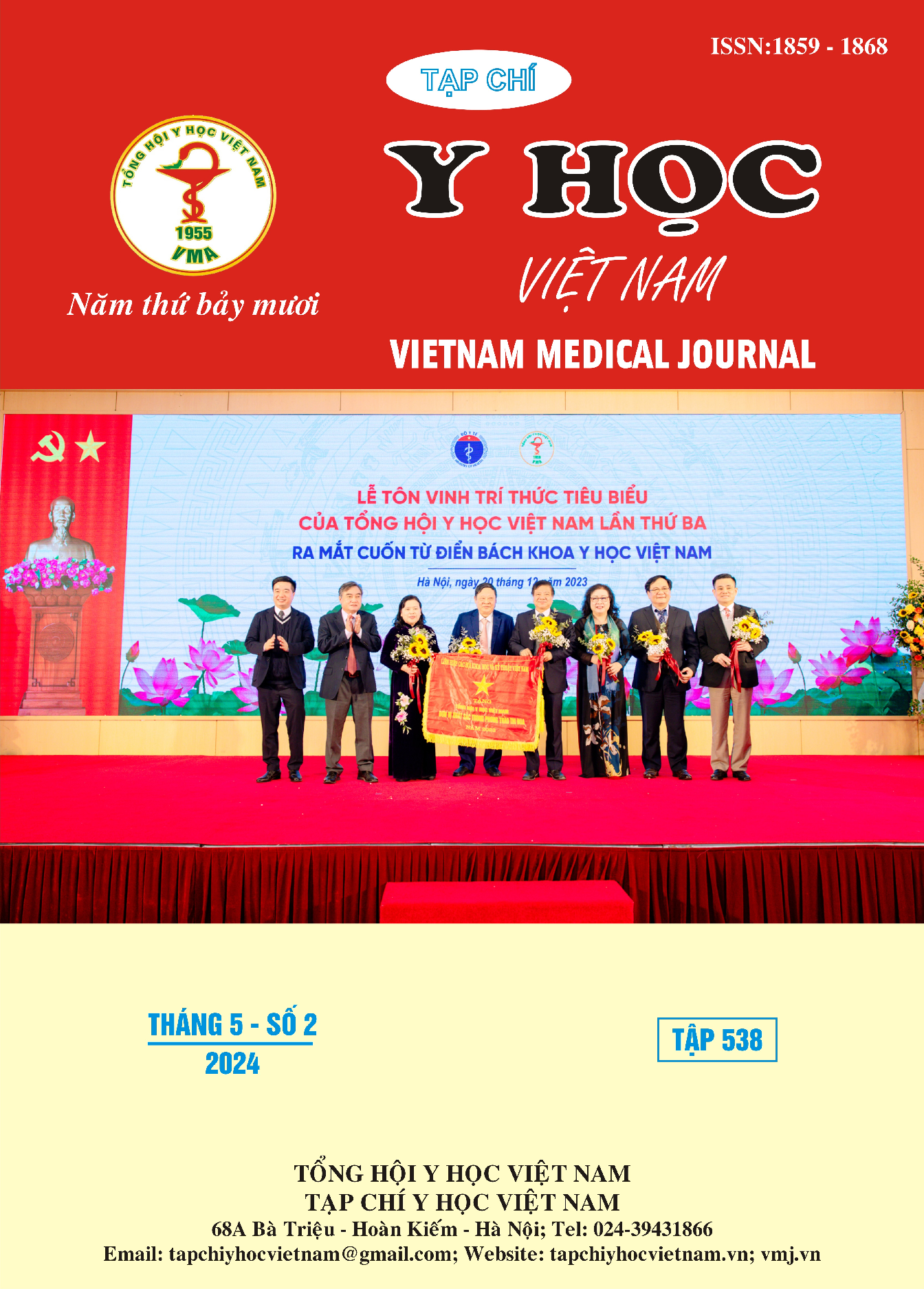CIRCULATION RATE OF DENGUE VIRUS TYPE CAUSING DENGUE FEVER AT THU DUC CITY HOSPITAL
Main Article Content
Abstract
Background: Dengue hemorrhagic fever (DHF) is an acute infectious disease caused by the Dengue virus and it still has no specific medicine or effective vaccine to prevent the disease. Therefore, determining the circulation rate of these virus types will help identifying, monitoring, and preventing the disease more effectively. Objectives: (1) Determine the rate of Dengue virus types in patients suffering from Dengue hemorrhagic fever at Thu Duc City Hospital. (2) Determine the relationship between this virus type and age, gender, and severity of illness. Subjects and Methods: Descriptive cross-sectional study was conducted from October 2022 - August 2023 on 332 patients who came for treatment at Thu Duc City Hospital to be diagnosed with Dengue hemorrhagic fever and required to do a quick NS1, IgM, IgG test for screening. Then they did an RT-realtime PCR test to determine the Dengue virus type. Results: In the study, out of the 332 qualified patients, there were 175 male and 157 female. RT-realtime PCR test detected and identified the type of Dengue virus in 252 patients including 133 male (52.8%), 119 female (47.2%) with the following percentage of serotypes: DENV -1 (27%), DENV-2 (64.3%), DENV-4 (6.7%), DENV-1&2 (2%) and none of DENV-3 was identified. DENV-2 type accounts for a much higher rate than other types in terms of age groups, gender and severity. Dengue virus types record different levels including: a low level of mild Dengue disease (88.5%), Dengue fever with warning signs (10.7%) and a few severe Dengue one (0.8%). Conclusion: Determine the circulation of Dengue virus type includes DENV-2 (64.3%), DENV-1 (27%), DENV-4 (6.7%) and a co-infected Dengue virus type: DENV-1&2 (2%). There is no relationship between Dengue virus type and age, gender. DENV-2 type has a higher risk of Dengue with warning signs and severity than other virus types.
Article Details
Keywords
Dengue fever, Dengue virus, Dengue virus type.
References
2. Dighe SN, Dua K, Chellappan DK, Katavic PL and Collet TA (2019). “Recent update on anti-dengue drug discovery”. European journal of medicinal chemistry, 176:431-455
3. Bộ Y Tế, (2019) Quyết định số 3705/QĐ-BYT. “Quyết định về việc ban hành hướng dẫn chẩn đoán, điều trị sốt xuất huyết Dengue”.
4. WHO (2017). Dengue and severe dengue.
5. Nguyễn Thị Trà My, Ngô Văn Phương, Lê Văn Tuấn (2023). “Đặc điểm dịch tễ học và sự lưu hành của các type huyết thanh vi rút Dengue gây bệnh sốt xuất huyết tại tỉnh Đắk Lắk năm 2020”. Tạp chí Y Dược học Cần Thơ.
6. San Martín JL, Brathwaite O, Zambrano B, et al (2010). “The epidemiology of dengue in the americas over the last three decades: a worrisome reality”. Am J Trop Med Hyg, 82(1):128-35.
7. Nguyễn Mạnh Hùng (2018). “Nghiên cứu sự lưu hành các type vi rút dengue và mối liên quan đến một số đặc điểm dịch tễ của bệnh nhân sốt xuất huyết dengue tại Hà Nội, năm 2015-1017”. Luận văn bác sĩ chuyên khoa II. Đại học Y Hà Nội.
8. Fried JR, Gibbons RV, Kalayanarooj S, et al (2010). “Serotype-specific differences in the risk of dengue hemorrhagic fever: an analysis of data collected in Bangkok, Thailand from 1994 to 2006”. PLoS Negl Trop Dis, 4(3):e617


